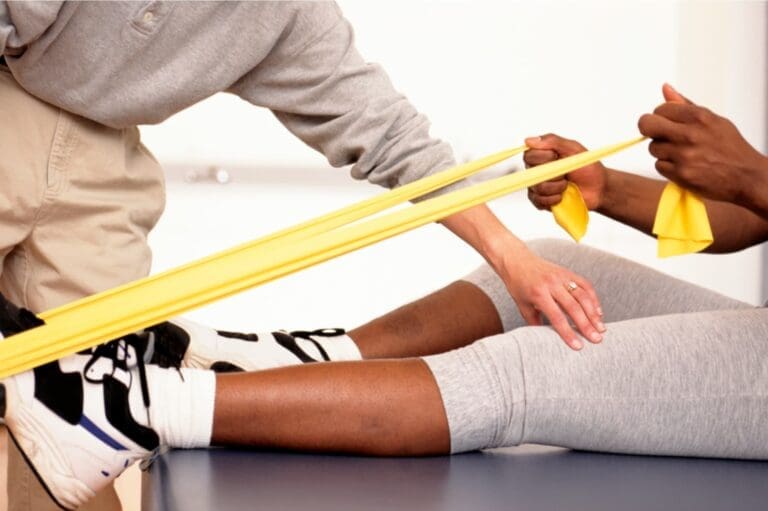We independently review everything we recommend. When you buy through our links, we may earn a commission. Learn more›
Introduction from Holly Roser Fitness
Hey there, health enthusiasts and financial savvy folks! Holly Roser here, coming at you from the bustling heart of Manhattan. As a fitness professional and the founder of Holly Roser Fitness, I’ve seen firsthand how prioritizing your health today can lead to significant savings down the road. Whether you’re a gym rat, a home workout warrior, or just starting your fitness journey, there’s something here for everyone. Today, we’re diving into something that might not be on your radar: how getting fit can actually fatten up your wallet in the long run. Intrigued? Let’s break it down!
The Hidden Connection: Fitness and Financial Health
When most people think about fitness, they picture sculpted abs and toned arms. But what if I told you that your workout routine could also shape up your financial future? It’s not just about looking good in your jeans; it’s about reducing the likelihood of forking over your hard-earned cash for medical bills later in life.
Let’s face it: healthcare costs are skyrocketing faster than you can say “burpee.” According to a recent study published in the Journal of the American Medical Association, healthcare spending in the United States reached a whopping $3.8 trillion in 2019, with projections suggesting it could hit $6.2 trillion by 2028 (Keehan et al., 2020). That’s a lot of zeros, folks!
But here’s the kicker: a significant portion of these costs is linked to preventable chronic diseases. We’re talking about conditions like type 2 diabetes, heart disease, and certain cancers – all of which have strong connections to lifestyle factors, including physical inactivity and poor fitness levels.
The Price Tag of Inactivity
Before we dive into how fitness can save you money, let’s talk about the cost of doing nothing. It’s easy to brush off exercise when life gets hectic, but that sedentary lifestyle comes with a hefty price tag.
A groundbreaking study published in The Lancet Global Health found that physical inactivity costs healthcare systems around the world a staggering $67.5 billion annually (Ding et al., 2016). That’s billion with a ‘B’, folks! And guess what? A large chunk of that is coming straight out of your pocket through increased insurance premiums and out-of-pocket expenses.
Fitness: Your Financial Health Coach
Now, I know what you’re thinking: “Holly, getting fit isn’t always easy or cheap.” And you’re right, it does require some effort and investment. But let’s shift our perspective a bit. Instead of viewing it as an expense, think of it as a down payment on your future health – and your future wealth.
The Long-Term ROI of Fitness
When you commit to a regular fitness routine, you’re not just investing in sweat. You’re investing in:
- Improved overall health and reduced risk of chronic diseases
- Better mental health and stress management
- Increased energy and productivity
- Enhanced quality of life and independence as you age
These benefits translate directly into reduced healthcare costs. How? By lowering your risk of chronic diseases, improving your overall health, and potentially reducing your need for medications or medical interventions down the line.
The Numbers Don’t Lie
Let’s crunch some numbers, shall we? A study published in the Journal of the American Heart Association found that individuals who met the recommended physical activity guidelines spent $2,500 less per year on healthcare compared to those who didn’t (Valero-Elizondo et al., 2016). That’s money in your pocket, year after year!
“Patients with heart disease who met physical activity guidelines reported spending about $2,500 less in annual healthcare expenses compared to those who did not meet guidelines.”
Now, imagine investing in your fitness consistently over the years. Even if you spent money on gym memberships, home equipment, or occasional guidance from fitness professionals, you could potentially recoup that investment through reduced healthcare costs. And that’s not even counting the intangible benefits like improved quality of life, increased productivity, and the joy of feeling strong and healthy.
Breaking Down the Savings: Where You’ll See the Difference
Alright, let’s get specific about where these savings come from. When you commit to a healthier lifestyle through regular exercise, you’re likely to see financial benefits in several areas:
1. Lower Insurance Premiums
Many insurance companies offer discounts for policyholders who maintain a healthy lifestyle. By improving your fitness metrics, you might qualify for these discounts, putting money back in your pocket every month.
2. Reduced Medication Costs
Regular exercise can help manage or even prevent conditions like high blood pressure, type 2 diabetes, and high cholesterol. This could mean fewer prescription medications, which can add up to significant savings over time.
3. Fewer Doctor Visits
When you’re in better shape, you’re less likely to need frequent check-ups or treatments for minor ailments. Those co-pays and deductibles can really add up!
4. Increased Earning Potential
While not directly related to healthcare costs, it’s worth noting that being fit and healthy can lead to increased productivity and potentially higher earnings. After all, when you feel good, you perform better at work!
The Holistic Approach: Beyond the Gym
At Holly Roser Fitness, we believe in a holistic approach to health and fitness. It’s not just about the workouts; it’s about creating a lifestyle that supports your long-term health and financial goals. Here’s how you can approach it:
Find Your Fitness Groove
Whether you prefer hitting the gym, working out at home, or enjoying outdoor activities, the key is to find a fitness routine that you enjoy and can stick with long-term. Consistency is key to reaping both the health and financial benefits.
Nutritional Wisdom
Exercise is just one piece of the puzzle. Making smart nutritional choices supports your fitness goals and overall health. Eating well doesn’t have to break the bank – focus on whole foods and meal planning to nourish your body without emptying your wallet.
Stress Management
Chronic stress can lead to a host of health problems (and healthcare costs). Incorporate stress-reduction techniques like meditation, yoga, or even just regular walks in nature to build resilience and maintain your cool in the face of life’s challenges.
Continuous Learning
Knowledge is power. Stay informed about health and fitness trends, and don’t be afraid to seek guidance when you need it. Whether it’s through books, reputable online resources, or consultations with fitness professionals, investing in your health education can pay dividends in the long run.
Real People, Real Savings: Success Stories
Don’t just take my word for it. Let’s look at some real-life examples of how investing in fitness has paid off:
Sarah’s Story: From Couch Potato to Cash Saver
Sarah, a 45-year-old marketing executive, decided to take control of her health after being diagnosed with high blood pressure and borderline type 2 diabetes. She started with daily walks, gradually increased her activity level, and made healthier food choices. After six months of consistent effort, she was able to come off her blood pressure medication and normalize her blood sugar levels. The savings on medications alone were substantial, not to mention the improvement in her quality of life.
Mike’s Journey: Investing in Prevention
Mike, a 34-year-old software developer, decided to prioritize his fitness after his father had a heart attack. By focusing on preventive health through regular exercise and a balanced diet, Mike improved his cardiovascular health markers and reduced his risk of heart disease.
Getting Started: Your Roadmap to Health and Wealth
Ready to start your journey towards better health and a healthier bank account? Here’s your action plan:
- Assess Your Current Health: Get a thorough check-up to understand your baseline and any potential risk factors.
- Set Clear Goals: What do you want to achieve, both health-wise and financially?
- Start Small: Don’t feel pressured to dive into an intense routine right away. Even small increases in physical activity can have significant benefits.
- Find Support: Whether it’s a workout buddy, an online community, or professional guidance, having support can boost your motivation and accountability.
- Track Your Progress: Keep tabs on both your fitness improvements and any changes in healthcare spending.
- Stay Consistent: Remember, this is a long-term strategy. Stick with it to see the best results.
Conclusion: The Ultimate Investment Strategy
In the world of finance, we’re always looking for smart investments that yield high returns. But the truth is, one of the best investments you can make is in yourself – specifically, in your health and fitness.
By committing to a healthier lifestyle, you’re not just investing in a better body; you’re investing in a healthier, wealthier future. The dividends? Reduced healthcare costs, improved quality of life, and the peace of mind that comes with knowing you’re taking proactive steps to secure your financial and physical well-being.
At Holly Roser Fitness, we’re passionate about helping you achieve these goals. Whether you’re in Manhattan looking for at-home fitness options or seeking mobile fitness solutions, we’re here to support you on this journey to financial and physical fitness.
Call to Action
Ready to start investing in your health and your wealth? Let’s chat! Book a free consultation with Holly Roser Fitness today, and let’s explore how we can support your fitness journey in a way that fits your goals and your budget. Remember, every step towards better health is a step towards a stronger financial future – and we’re here to help you make those steps count!
Visit HollyRoser.com to learn more about our services and how we can help you achieve your fitness and financial goals.
Recommended Products for Fitness and Financial Health
To enhance your fitness journey and support your financial health goals, consider these carefully selected products:
| Fitbit Charge 5 Advanced Fitness & Health Tracker – Track your activity, sleep, and stress levels to optimize your health and potentially reduce healthcare costs. |
| $129.95 at Amazon |
| Resistance Bands Set – A versatile and cost-effective way to strength train at home, reducing gym membership costs. |
| $29.99 at Amazon |
| Meal Prep Containers – Save money on eating out and support your nutrition goals with these portion-controlled containers. |
| $26.99 at Amazon |
Recommended Reading
| “The Total Money Makeover” by Dave Ramsey – Learn how to manage your finances while investing in your health. |
| Check price on Amazon |
| “Younger Next Year” by Chris Crowley and Henry S. Lodge – Discover how exercise can help you turn back your biological clock and save on healthcare costs. |
| Check price on Amazon |
And remember, folks: The only thing better than a strong body is a strong body with a fat wallet. So let’s get moving – your future self (and your future bank account) will thank you!
References
Ding, D., Lawson, K. D., Kolbe-Alexander, T. L., Finkelstein, E. A., Katzmarzyk, P. T., van Mechelen, W., & Pratt, M. (2016). The economic burden of physical inactivity: a global analysis of major non-communicable diseases. The Lancet, 388(10051), 1311-1324.
Keehan, S. P., Cuckler, G. A., Poisal, J. A., Sisko, A. M., Smith, S. D., Madison, A. J., … & Hardesty, J. C. (2020). National health expenditure projections, 2019–28: expected rebound in prices drives rising spending growth. Health Affairs, 39(4), 704-714.
Valero-Elizondo, J., Salami, J. A., Ogunmoroti, O., Osondu, C. U., Aneni, E. C., Malik, R., … & Nasir, K. (2016). Economic impact of moderate-vigorous physical activity among those with and without established cardiovascular disease: 2012 medical expenditure panel survey. Journal of the American Heart Association, 5(9), e003614.











